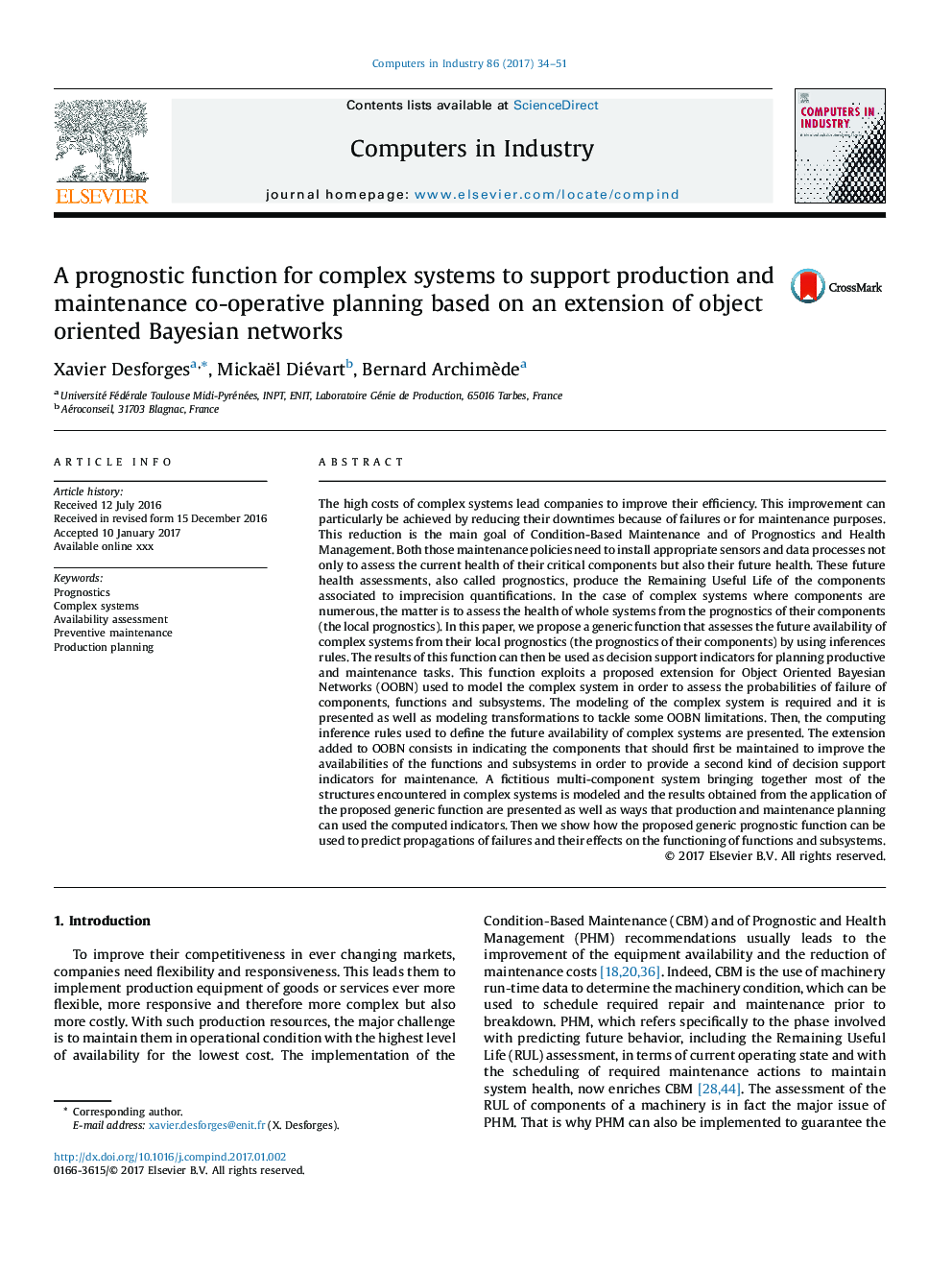| Article ID | Journal | Published Year | Pages | File Type |
|---|---|---|---|---|
| 4965529 | Computers in Industry | 2017 | 18 Pages |
Abstract
The high costs of complex systems lead companies to improve their efficiency. This improvement can particularly be achieved by reducing their downtimes because of failures or for maintenance purposes. This reduction is the main goal of Condition-Based Maintenance and of Prognostics and Health Management. Both those maintenance policies need to install appropriate sensors and data processes not only to assess the current health of their critical components but also their future health. These future health assessments, also called prognostics, produce the Remaining Useful Life of the components associated to imprecision quantifications. In the case of complex systems where components are numerous, the matter is to assess the health of whole systems from the prognostics of their components (the local prognostics). In this paper, we propose a generic function that assesses the future availability of complex systems from their local prognostics (the prognostics of their components) by using inferences rules. The results of this function can then be used as decision support indicators for planning productive and maintenance tasks. This function exploits a proposed extension for Object Oriented Bayesian Networks (OOBN) used to model the complex system in order to assess the probabilities of failure of components, functions and subsystems. The modeling of the complex system is required and it is presented as well as modeling transformations to tackle some OOBN limitations. Then, the computing inference rules used to define the future availability of complex systems are presented. The extension added to OOBN consists in indicating the components that should first be maintained to improve the availabilities of the functions and subsystems in order to provide a second kind of decision support indicators for maintenance. A fictitious multi-component system bringing together most of the structures encountered in complex systems is modeled and the results obtained from the application of the proposed generic function are presented as well as ways that production and maintenance planning can used the computed indicators. Then we show how the proposed generic prognostic function can be used to predict propagations of failures and their effects on the functioning of functions and subsystems.
Related Topics
Physical Sciences and Engineering
Computer Science
Computer Science Applications
Authors
Xavier Desforges, Mickaël Diévart, Bernard Archimède,
